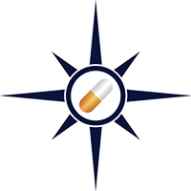April witnessed considerable volatility in pharmaceutical stocks as the US President Donald Trump’s administration signaled major shifts in drug pricing policies and import regulations.
These include Trump’s proposed international reference
pricing to align US drug prices with lower costs in other developed
countries, a national security
investigation into pharmaceutical imports that could lead to tariffs of
25 percent or more on foreign-made
drugs and, a sweeping executive order to reshape Medicare
drug pricing.
However, as the month drew to a close, key pharmaceutical indices rebounded and were back in the black. The Nasdaq Biotechnology Index (NBI) rose 0.44 percent from 4,241.91 to 4,260.42. The SPDR S&P Biotech ETF (XBI) rose 2.58 percent — from 80.86 to 82.95. And the S&P Biotechnology Select Industry Index (SPSIBI) increased 0.91 percent — from 6,319.47 to 6,376.95. However, stocks of most drugmakers ended the month in the red.
Access the Pipeline Prospector Dashboard for April 2025 Newsmakers (Free Excel)
Trump’s tariff threats prompt drug majors to announce investments in US
The unrest created by Trump’s tariff threat on drug imports was palpable across the world. In Europe, CEOs of nearly three dozen global drugmakers, including
Pfizer, Eli Lilly, and AstraZeneca, warned European Commission
President Ursula von der Leyen that without "rapid, radical policy change", over US$ 100 billion in pharma R&D and manufacturing could leave the European Union. These drugmakers are pushing for abandonment of price controls to match US pricing levels.
Global players are also rapidly reorienting their manufacturing
strategies towards the US soil in order to avoid imminent tariffs on imported
medicines. For instance, Swiss pharmaceutical giant Roche has announced a massive US$ 50 billion investment in the US over
the next five years. Another Swiss drugmaker, Novartis, has committed US$ 23 billion to expand its US operations over the next five years.
Meanwhile, AstraZeneca has said it will be shifting the production of some drugs sold in America from Europe to the US in order to avoid Trump’s tariffs. Even American drugmaker AbbVie plans to invest US$ 10 billion in US manufacturing over the
next decade to avoid tariffs.
Regeneron Pharmaceuticals has taken a different
approach by announcing an investment exceeding US$ 3 billion through a 10-year strategic
partnership with Fujifilm Diosynth
Biotechnologies. This collaboration aims to nearly double Regeneron’s US production capacity for biologic medicines.
Access the Pipeline Prospector Dashboard for April 2025 Newsmakers (Free Excel)
Merck buys SpringWorks for US$ 3.9 bn; GSK inks US$ 2.7 bn deal with ABL Bio
This was going to be a year of mergers and acquisitions. But with the imminent policy changes in America’s healthcare sector, M&A activity appears to have slowed down. However, the last days of April saw two M&A announcements — Merck KGaA entered into a
deal to buy US biotech company SpringWorks Therapeutics for US$ 3.9 billion, and Novartis announced the acquisition of Regulus Therapeutics for up to US$ 1.7 billion.
The month saw several licensing deals. GSK signed a licensing agreement
valued at approximately £ 2.08 billion (US$ 2.66 billion) with South Korea’s ABL Bio for exclusive access to ABL’s innovative Grabody-B brain delivery platform, a technology designed to enhance the penetration of therapeutic antibodies across the notoriously selective blood-brain barrier (BBB). The BBB acts as the body’s natural defense to protect the brain from toxins and pathogens.
Similarly, Eli Lilly inked a US$ 1.4 billion licensing agreement with Sangamo Therapeutics to gain access to Sangamo’s proprietary neurotropic adeno-associated virus (AAV) capsid, STAC-BBB, which has shown remarkable potential in crossing the BBB.
In the autoimmune and immunology space, Sanofi signed an exclusive licensing agreement with US biotech Earendil Labs valued at up to US$ 1.8 billion. The agreement centers on two next-generation bispecific antibodies, HXN-1002 and HXN-1003, discovered through Earendil's AI-driven high-throughput protein modeling platform.
Access the Pipeline Prospector Dashboard for April 2025 Newsmakers (Free Excel)
Lilly’s obesity pill matches Ozempic in trial; Novo seeks FDA nod for semaglutide pill
In the market for obesity meds, Eli Lilly’s experimental weight-loss
pill, orforglipron, demonstrated efficacy that was comparable to its rival Novo Nordisk’s injectable Ozempic. Analysts view orforglipron
pill as a potential game-changer in obesity treatment.
Meanwhile, Novo Nordisk has sought FDA approval for a 25-mg pill version of
its weight loss medication semaglutide. And Rhythm Pharmaceuticals’ drug, Imcivree (setmelanotide), achieved primary endpoint in a late-stage trial for acquired hypothalamic obesity, a rare condition resulting from damage to the brain’s hypothalamus.
Meanwhile, in a high profile trial failure, Pfizer discontinued development of its experimental oral
weight-loss pill, danuglipron, following a case of potential drug-induced liver
injury in a clinical trial participant. Another significant disappointment came
from BMS’ investigational
schizophrenia drug, Cobenfy
(xanomeline and trospium chloride) — it failed to meet the primary endpoint in a pivotal late-stage trial evaluating its use as an adjunctive treatment for patients who no longer respond to standard antipsychotics. Adding to the month’s disappointments, FDA declined to approve Aldeyra Therapeutics’ dry eye disease treatment, reproxalap, for the second time.
Access the Pipeline Prospector Dashboard for April 2025 Newsmakers (Free Excel)
Amgen’s Uplizna, Sanofi’s Dupixent among noteworthy FDA approvals
Amgen received a groundbreaking
approval for Uplizna (inebilizumab-cdon) as the first and only treatment for immunoglobulin G4-related disease (IgG4-RD), a rare and chronic immune-mediated inflammatory condition. Analysts estimate that Uplizna could generate global annual sales of US$ 1.3 billion by 2030 for the IgG4-RD indication alone.
Sanofi and Regeneron received FDA approval for Dupixent (dupilumab) to treat chronic spontaneous urticaria (CSU) in patients aged 12 and older who remain symptomatic despite antihistamine therapy. Sanofi’s bestselling drug is now FDA-approved for seven indications.
As the month drew to a close, FDA approved Abeona Therapeutics’ gene therapy — Zevaskyn (prademagene zamikeracel) — for a rare skin disorder known as recessive
dystrophic epidermolysis bullosa. It also approved Johnson & Johnson’s Imaavy (nipocalimab-aahu), a drug that treats patients aged 12 years and older with a form of generalized myasthenia gravis (gMG) — an immunity-related disorder that weakens the skeletal muscles, especially those in the eyes, mouth, throat and limbs.
Access the Pipeline Prospector Dashboard for April 2025 Newsmakers (Free Excel)
Our view
The US economy contracted by 0.3 percent during the first quarter of
2025, as businesses panicked and imported goods to avoid higher costs. The US
dollar has been weakening, and has hit a fresh low against the euro, Japanese
yen and the Swiss franc. This will reduce the profit of foreign companies from
their US divisions once they remit their earnings back to their home country.
A study undertaken by Ernst & Young has predicted that a 25 percent US tariff on drug imports would increase drug cost by nearly US$ 51 billion annually, thereby boosting drug prices in America by 12.9 percent. These and other cues only point to the fact that Trump administration’s policies will hurt the US. As of today, a rollback or a softening of stand looks like a distant possibility. Access the Pipeline Prospector Dashboard for April 2025 Newsmakers (Free Excel)








